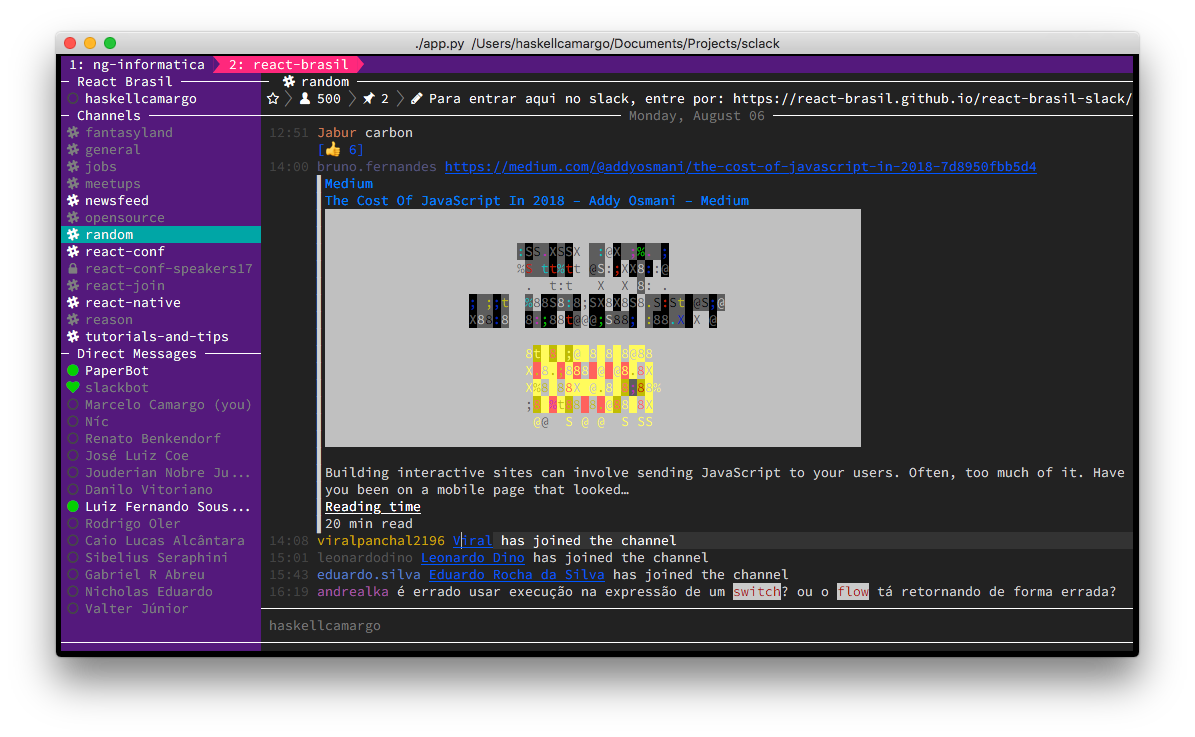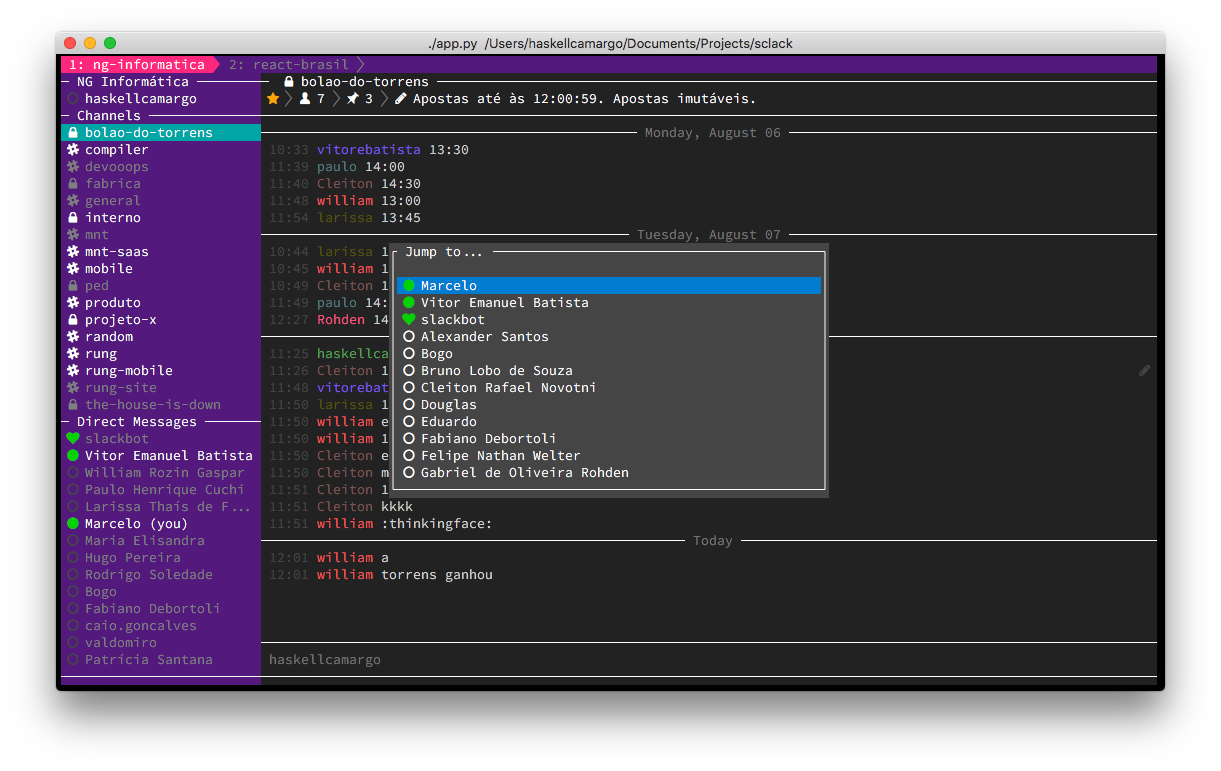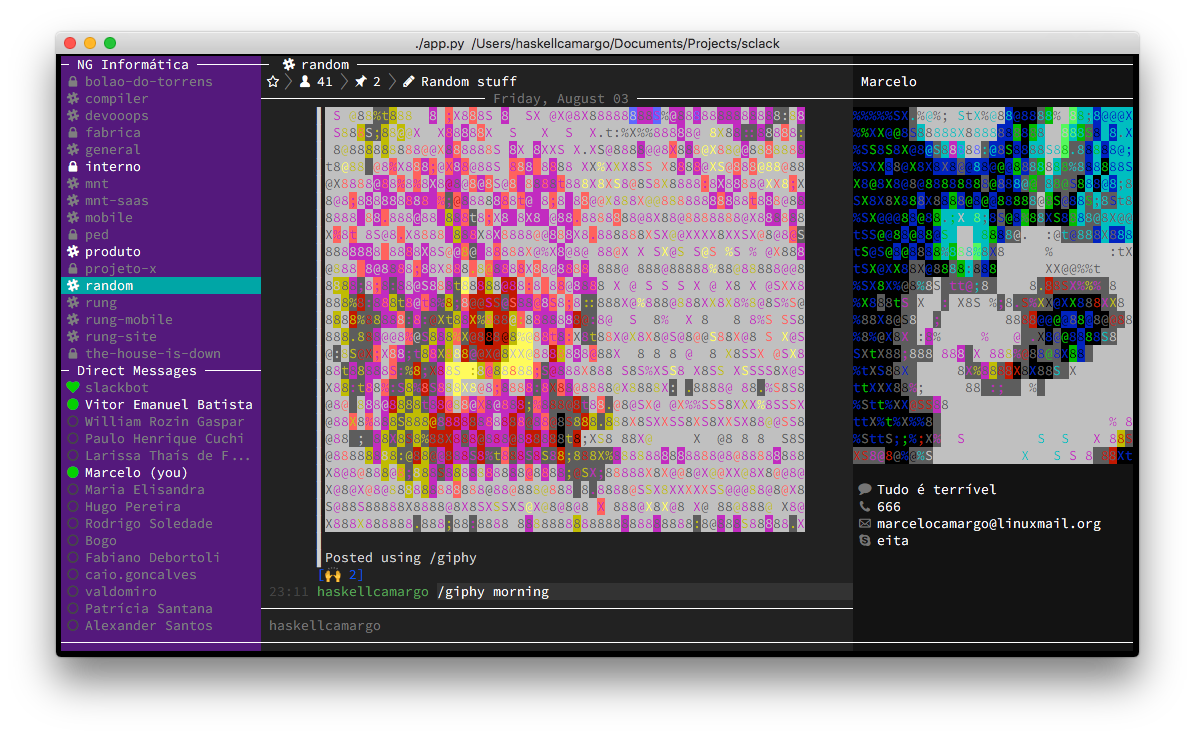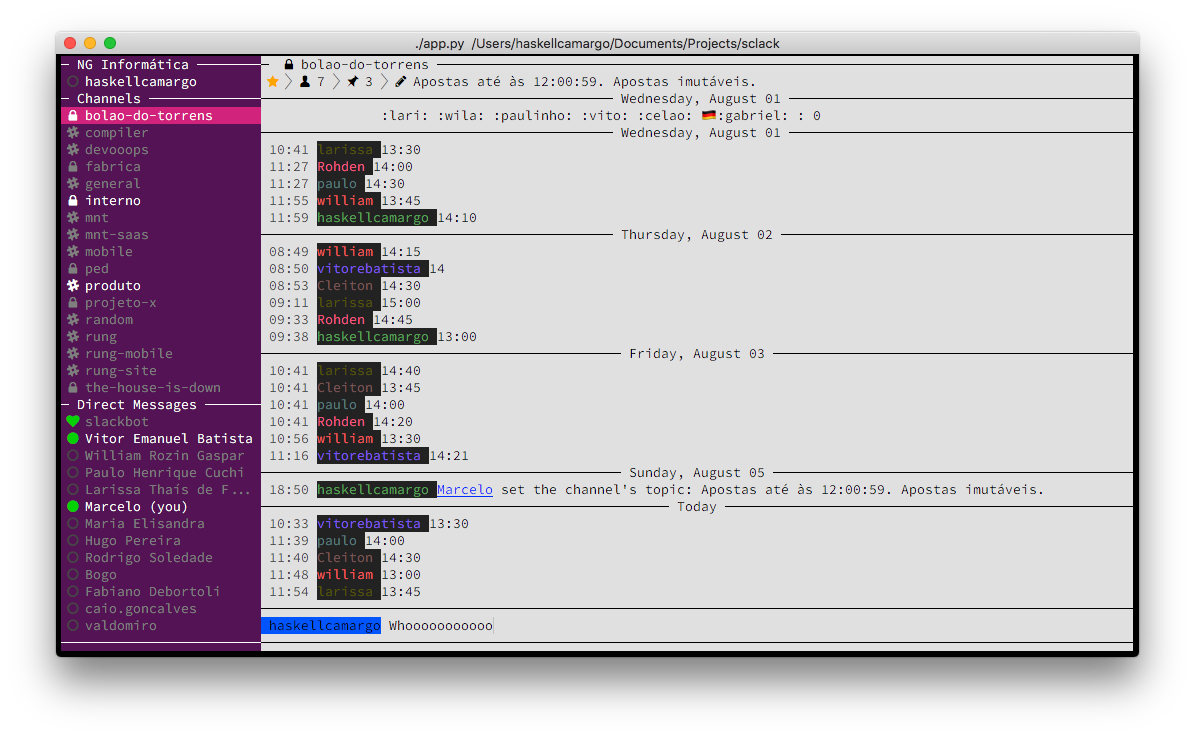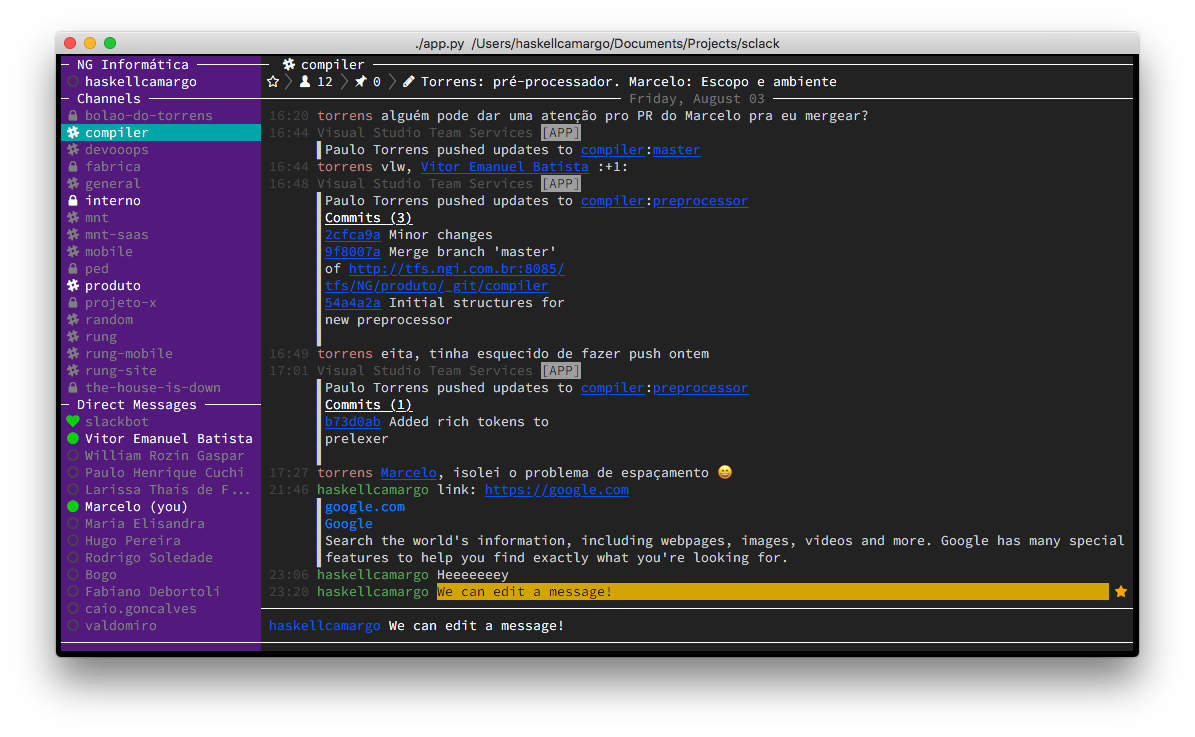The best CLI client for Slack, because everything is terrible!
The project is still under alpha, there are lots of things already done, but there is also a lot of work to do! If you want to help, please contact me under marcelocamargo@linuxmail.org or create an issue! Working in community, we can soon have a CLI client as complete as the web one!
First of all get a Slack token here. Use, create or request a token for each workspace that you'll use on Sclack. Not all workspaces allow you to generate a legacy token, so sometimes you'll need to ask for the administrator to enable the feature.
Unfortunately some serious hoops need to be jumped through to use a non-legacy token.
- Go to https://api.slack.com/apps
- Click "Create new app"
- Give the app a name (maybe "Sclack") and select the server you'd like to use
- Go to "OAuth & Permissions" and add a new redirect URL:
http://localhost:8080 - Go back to the previous page, you'll be able to see "Client ID" (you will also need the "Client Secret" later). Use this to fill in this url:
https://slack.com/oauth/authorize?client_id=[Client ID here]&scope=client
- Go to that URL in your browser, and authorize the app
- The page will redirect to a blank page. Look at the URL and copy the
code=parameter (http://localhost:8080?code=[code-will-be-here]&state=) - Now using the copied code, as well as the "Client ID" and "Client Secret" from the app page, fill in and execute this command:
curl -s "https://slack.com/api/oauth.access?client_id=[client id here]&client_secret=[client secret here]&code=[code here]"
- Finally, copy the
access_tokenfrom the response (should start withxoxs-). This is your new auth token for Sclack
Sclack seems better when used with a Nerd Font. Using them is completely optional, but it is how some Sclack icons are possible. Personally, I use Fira Code Nerd Font. Download, install and set as the default font of your terminal emulator.
Sclack uses caca-utils to create ANSI/VT100 + ASCII versions of pictures and
render them. Images will only be rendered if both caca-utils is installed
and features.pictures is configured to true. To install caca-utils, just
run sudo apt-get install caca-utils on Debian and brew install libcaca --with-imlib2 on
OS X.
Ensure you have Python 3.4 or superior version.
pip
git clone https://github.com/haskellcamargo/sclack.git
cd sclack
pip3 install -r requirements.txt
chmod +x ./app.py
./app.pypipenv
git clone https://github.com/haskellcamargo/sclack.git
cd sclack
export PIPENV_VENV_IN_PROJECT=1
pipenv install # install deps
pipenv shell # enter virtualenv
python app.py # run appIf you don't have Python installed, you can get the compiled binary for Sclack on releases page. Versions will be available for Linux x86/x64 and OS X.
Run ./app.py after giving the correct permissions. If you don't have a ~/.sclack file, you can generate one here by providing your workspace token. You can change the theme, enable or disable images, emojis, markdown, configure keyboards and everything else on config.json. Important: use q to quit!
Your ~/.sclack file will look like:
{
"workspaces": {
"default": "wow-such-secret"
}
}If you want to, you can use Sclack in multiple workspaces. You can have
at most 9 workspaces defined inside workspaces:
{
"workspaces": {
"default": "wow-such-secret",
"another": "wow-another-secret"
}
}You can use the keys from 1 up to 9 to switch workspaces or event right-click the indicator:
You can use ctrl k (or your custom shortcut) to navigate in your DMs and channels.
You can use ctrl d (or your custom shortcut) to set snooze time.
Focus on message and press r (or your custom shortcut) to get permalink (Quote message) and it will be put into your chat box.
{
"keymap": {
"cursor_down": "j",
"cursor_left": "h",
"cursor_right": "l",
"cursor_up": "k",
"delete_message": "d",
"edit_message": "e",
"go_to_chatbox": "c",
"go_to_profile": "p",
"go_to_sidebar": "esc",
"open_quick_switcher": "ctrl k",
"quit_application": "q",
"set_edit_topic_mode": "t",
"set_insert_mode": "i",
"yank_message": "y",
"get_permalink": "r",
"set_snooze": "ctrl d"
}
}The mouse support also has been programmed. You can scroll the chatbox and the sidebar and double click the channels to select.
{
"sidebar": {
"width": 25,
"max_users": 20
}
}max_users: Max users who are shown in the sidebar
{
"features": {
"emoji": true,
"markdown": true,
"pictures": true,
"browser": ""
}
}browser: Config your preferable browser to open the link, when ever you focus on chat box text which contains external link (http/https), press enter key, the link will be opened. Valid value. Example you can config"browser": "chrome"
Sclack has been tested with the following terminal emulators:
- Gnome Terminal
- iTerm2
- QTerminal
- Terminal (OS X)
- Terminator
- XTerm
To run the tests first install the development dependencies via:
pip3 install -r requirements-dev.txt
and then run pytest.
Contributions are very welcome, and there is a lot of work to do! You can...
- Check out our open issues
- Provide bug reports
- Create packages for pip, apt, dnf, rpm, pacman and brew
- Improve documentation
- Implement handler for new events
- Refactor the workarounds in the code
- Create new themes
- Make things easier to configure
Made with 😡 by @haskellcamargo

